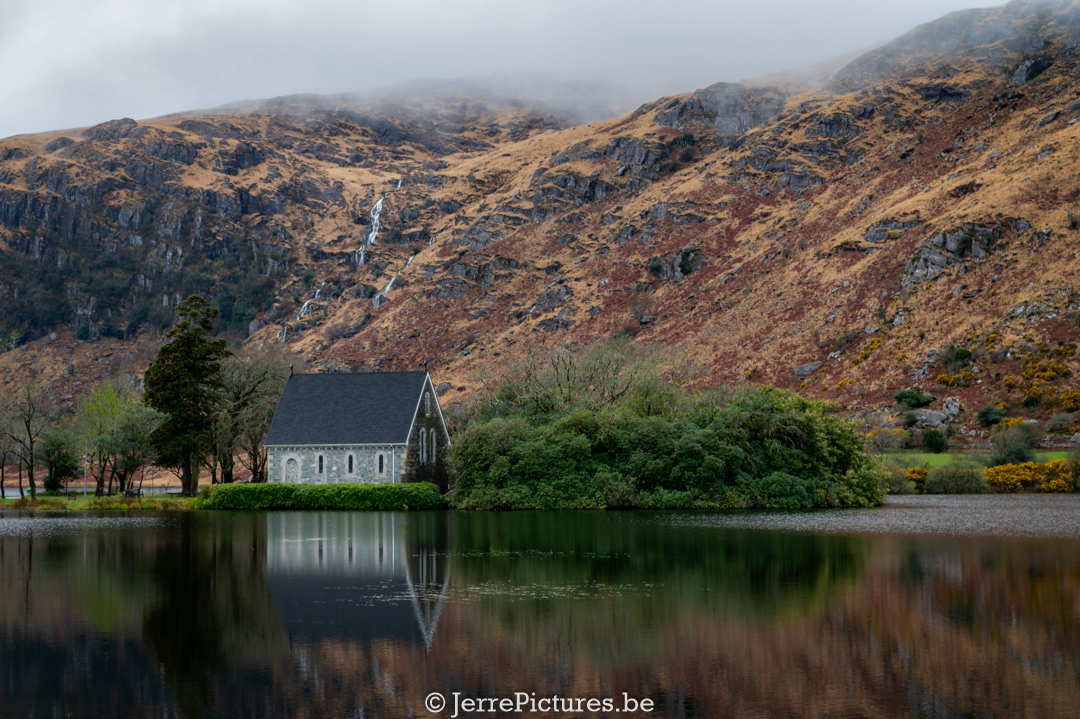TIPS TO KEEP IN MIND, ESPECIALLY WHEN TRAVELING WITH A CAMPER.
My experience when we arrived at Gougane Barra National Forest Park was quintessentially Irish – the weather couldn’t decide between rain and gloomy clouds. To add to the chaos, there was a wedding taking place at the adjacent hotel, which meant the number of available parking spots was close to zero. On the bright side, we stumbled upon a sparkling clean public restroom, always a delightful discovery for any traveler. If you plan on visiting, be aware that this is a popular spot for locals to snap their wedding photos, and if there’s a big celebration happening at the hotel, finding a spot for your camper might prove to be a challenge!
Update: I read on their official website that you have to pay 5 euros in coins for parking. However, I’m not sure if that also applies during the low season.
additional where to stay? If you’re seeking tranquility, you will certainly find it in the local hotel, which has been family-owned for five generations
A nerdy deep dive into Gougana Barra National Forest Park
Gougane Barra National Forest Park is a beautiful and peaceful park located in County Cork, Ireland. The park is named after the nearby Gougane Barra Lake, which sits in a valley surrounded by steep mountains.
The park covers an area of approximately 1,000 hectares and is home to a variety of flora and fauna, including native Irish oaks, yews, and birches, as well as a range of bird species such as the dipper, heron, and kingfisher. Visitors can enjoy scenic walks and hikes through the park, with various trails of easy to moderate difficulty.
One of the main attractions in the park is the Gougane Barra Lake, a popular spot for fishing and boating. The lake also houses a small island with the ruins of a seventh-century monastery founded by St. Finbarr, the patron saint of Cork. Here also stands a unique church, namely St. Finbarr’s Oratory. It is a small chapel located on an island in the middle of Gougane Barra Lake and is one of the most iconic landmarks in the park. The chapel is named after the founder of the nearby seventh-century monastery, St. Finbarr. It was built in 1905 by a man named Canon Denis O’Donovan, who designed it as a place for pilgrims to pray and meditate. What makes St. Finbarr’s Oratory so special is that it is located on a small island in the middle of the lake and can only be reached by a path that runs through the water. This gives the chapel a unique, secluded atmosphere and makes it a popular location for weddings and other ceremonies. Inside the chapel, there is a simple altar and a few benches for visitors to sit and pray. It is a serene and spiritual place that embodies the history and cultural heritage of Ireland and is a significant attraction for visitors to the park.
Other notable features in the park include the Gougane Barra waterfall, the River Lee, and the famous Gougane Barra Hotel, which has been welcoming visitors to the area for over a century.
All in all, Gougane Barra National Forest Park is a beautiful and peaceful destination that offers visitors the opportunity to explore the natural beauty and rich history of Ireland.
“DISCOVER THE REBEL PAST OF GOUGANE BARRA NATIONAL FOREST PARK”
An interesting fact about Gougane Barra National Forest Park is that in the 19th century, it was a refuge for Irish rebels fighting against British rule. The area around Gougane Barra Lake was then a haven for many rebels who sought refuge there to escape from British troops.
One of the most infamous rebels who stayed in Gougane Barra was Michael Dwyer, a leader of the Irish rebellion against British rule in 1798. Dwyer fled to the mountains and stayed in Gougane Barra for several years, where he hid from British troops.
Although little is known about the exact location of his hiding place, it is said that Dwyer hid in the caves and hills around Gougane Barra Lake. His stay in Gougane Barra is just one of many examples of how the region became a refuge for rebels and insurgents in the 19th century.

